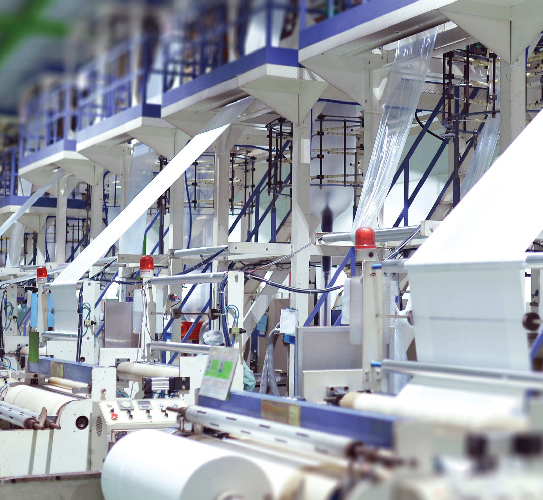POLYETHYLENE (PE)

POLYETHYLENE (PE)
Polyethylene is the most widely used plastic raw material in the world and can easily be touched by everyone in daily life. Its main usage area is the packaging industry. It has advantages such as low cost, resistance between -40 and +130 degrees, resistance to moisture and chemicals, types suitable for contact with food, being recyclable, and being able to be processed with all thermoplastic methods. Polyethylene (PE) is a thermoplastic and takes its name from the monomer ethylene.
Polyethylene is a lightweight, durable thermoplastic with a variable crystal structure. It is one of the most produced plastics in the world (tens of millions of tons are produced worldwide each year). Polyethylene is used in various markets (packaging, automotive, electrical, etc.) as films, tubes, plastic parts, laminates, etc. used in applications.
Polyethylene is made by the addition or radical polymerization of ethylene (olefin) monomers. (Chemical formula of Ethene- C2H4). Ziegler-Natta and Metallocene catalysts are used to carry out the polymerization of polyethylene.
LDPE (Low Density Polyethylene); They are semi-hard, translucent, very durable, weather resistant, good chemical resistance, low water absorption, easily processed by most methods, low cost products. Shrink, Greenhouse Cover, Nylon Bag, Carrying Bags, Packaging Films Napkin Bag, Surface Coating, Drip Tube, Lamination Film Melt Value 0.3 – 0.7 Injection Melt Value 10 – 20 – 70
HDPE (High Density Polyethylene); They are flexible, translucent/waxy, weather resistant, good low temperature toughness (down to -60°C), easy to process by most methods, low cost, good chemical resistance. Lid, Case, Plastic Pallet Jerrycan, Bottle, Jar, Toy Athlete Type Bag, Rustproof Bag, Carrying Bags, Pressurized Clean Water Pipe, Corrugated Pipe, Gas Pipe Net, Sack Injection Melting Value 1 – 20 Blowing Melting Value 0.2 – 0 ,7 Film Melting Value 0.02 – 0.07 Pipe Melting Value 0.03 – 0.07 Raffia Melting Value 0.7 – 0.9
LLDPE (Linear Low Density Polyethylene); Cling for General Purpose Strength, Production of Stretch Film Film Melting Value 0.2 – 3 Injection Melting Value 10 – 20 – 70
PE belongs to the polyolefin polymer family, classified according to its density and branching. The most common types of polyethylene are:
Branched Polymers
Low density polyethylene (LDPE)
Linear low density polyethylene (LLDPE)
Linear Polymers
High density polyethylene (HDPE)
Ultra high molecular weight polyethylene (UHMWPE)
Cross-linked polyethylene (PEX or XLPE)
In addition, PE is available in other types such as:
Medium density polyethylene (MDPE)
Very low density polyethylene (VLDPE)
High molecular weight polyethylene (HMWPE)
Ultra low molecular weight polyethylene (ULMWPE)
Chlorinated polyethylene (CPE)
SCOPE OF APPLICATION
Polyethylene is the most widely used commodity thermoplastic. By volume, HDPE is the most important quality, followed by LLDPE and LDPE. Applications include those in the building and construction, consumer goods, electronics, electrical and automotive industries. PE is widely used in the manufacture of a variety of consumer goods, including containers, buckets, pipes, toys, caps, plastic bags, stretch wraps, plastic wraps, sheets, films, bottles and extruded paper cartons.
